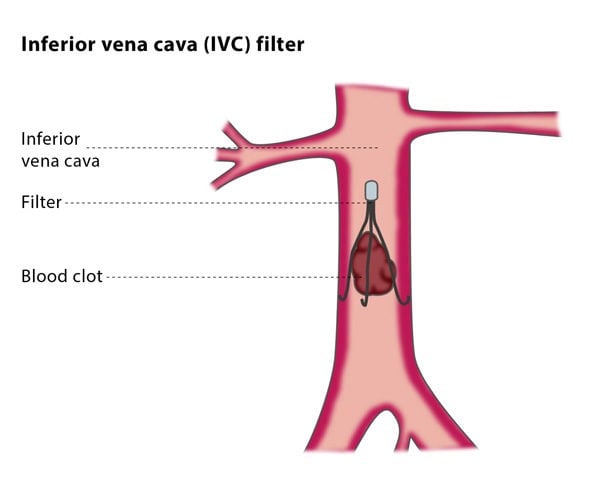If you receive a temporary IVC filter, the interventional radiologist will remove the filter after the necessary period of time has passed. To remove the IVC filter, the interventional radiologist will insert a long plastic tube and a goose-neck system (like a miniature lasso) as before and use this to remove the IVC filter.
Why perform it?
There are a number of treatments available to manage or prevent pulmonary emboli and DVT, including conservative (medical) therapy, IVC filters, intravenous systemic thrombolysis, catheter thrombolysis and a surgical operation.
Your suitability for this treatment depends on a number of factors, including how stable your blood pressure is and how well your heart is working. Other factors which will be taken into consideration are the type of IVC filter and your clinical situation, as permanent placement means you will need to take medication to prevent blood clotting for the rest of your life.
What are the risks?
There are some minor risks, including infection and bruising at the puncture site in your neck or groin. Major risks include the filter moving to another part of your body, the development of another thrombus, or a leg of the IVC filter breaking through the wall of the vein, which can be painful.
If you have a permanent IVC filter, the medication preventing blood clots that you will need to take carries further risks.
Bibliography
1. Eight-year follow-up of patients with permanent vena cava filters in the prevention of pulmonary embolism: the PREPIC (Prevention du Risque d’Embolie Pulmonaire par Interruption Cave) randomized study. Circulation 2005; 112:416-22.
2. Fox MA, Kahn SR. Postthrombotic syndrome in relation to vena cava filter placement: a systematic review. Journal of vascular and interventional radiology: JVIR 2008; 19:981-5.
3. Hann CL, Streiff MB. The role of vena caval filters in the management of venous thromboembolism. Blood reviews 2005; 19:179-202.

